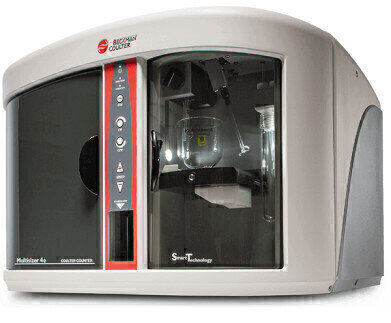Environmental Laboratory
MS4e: Count and Size Particles from 0.2µm to 1,600µm in water and wastewater
Jun 10 2020
Particles are everywhere, particles in water will be directly impact our daily life, from natural waters, water flowing through distribution and purification system, and not the least, wastewater.
Particle counting and size distribution analysis is an important step to determine the makeup of natural waters, treatment plant influent, process water and finished water. And from the analysis data, the number of particles in different size range, we may make decision on the treatment processes, need any changes in operations, monitor the process efficiency, make sure the maintenance of the system properly and earlier detection of process failure.
The most basic and traditional method for particle count and size analysis is using microscope. However, it is manual, time consuming, limited statistic and sometimes human bias. It is good if your sample contains large aggregates of larger than 500µm, but an automatic particle counter can have electronic records and FDA 21 CFR part 11 compliance.
In the standard methods for the examination of water and wastewater which is prepared and published by the American Public Health Association, American Water Works Association and the Water Environment Federation, for water testing, the method number 2560, one type of instrument mentioned is “Electrical Sensing Zone Instruments”.
The electrical sensing zone method is under the guidance of the ISO 13319 Determination of particle size distributions – Electrical sensing zone method. The technology was principally developed to count blood cells quickly by measuring the changes in electrical conductance as cells suspended in a conductive fluid passed through a small orifice, by Wallace H. Coulter in the late 1940s. Later in late 1950s the Coulter brothers found Coulter Electronics, Inc., now as Beckman Coulter, which the instrument systems utilise the coulter principle are called Coulter Counter. This method can be used to measure any particulate material that can be suspended in an electrolyte solution.
The latest Coulter counter members is the Multisizer 4e (https://ilmt.co/PL/3k2k) , which builds on the original Coulter Principle, adding a Digital Pulse Processor (DPP) for ultra-high resolution, multiple-channel analysis and accuracy unattainable by other technologies. The measurement data for each particle is analysed and stored. The data can be analysed and formatted in numerous ways or stored and re-analysed later – no need to analyse the sample again. Also, particles as small as 0.2 µm and as large as 1600 µm in diameter can routinely be measured.
The Multisizer 4e is capable to measures even only 1 particle per ml sample, from filtered water to wastewater. In software, we have automated determination of filtration efficiency, it only requires measuring the sample before and after the filtration. This function can help you to monitor the purification and treatment process, make sure the wastewater is in good condition before it returns to the environment. It is good for both research and quality control use.
Reference: Standard methods APHA 2560
Further information and technical data can be found here.
Digital Edition
IET 34.2 March 2024
April 2024
Gas Detection - Biogas batch fermentation system for laboratory use with automatic gas analysis in real time Water/Wastewater - Upcycling sensors for sustainable nature management - Prist...
View all digital editions
Events
Apr 30 2024 Melbourne, Australia
Apr 30 2024 Birmingham, UK
May 03 2024 Seoul, South Korea
May 05 2024 Seville, Spain
May 06 2024 Minneapolis, MN, USA


















